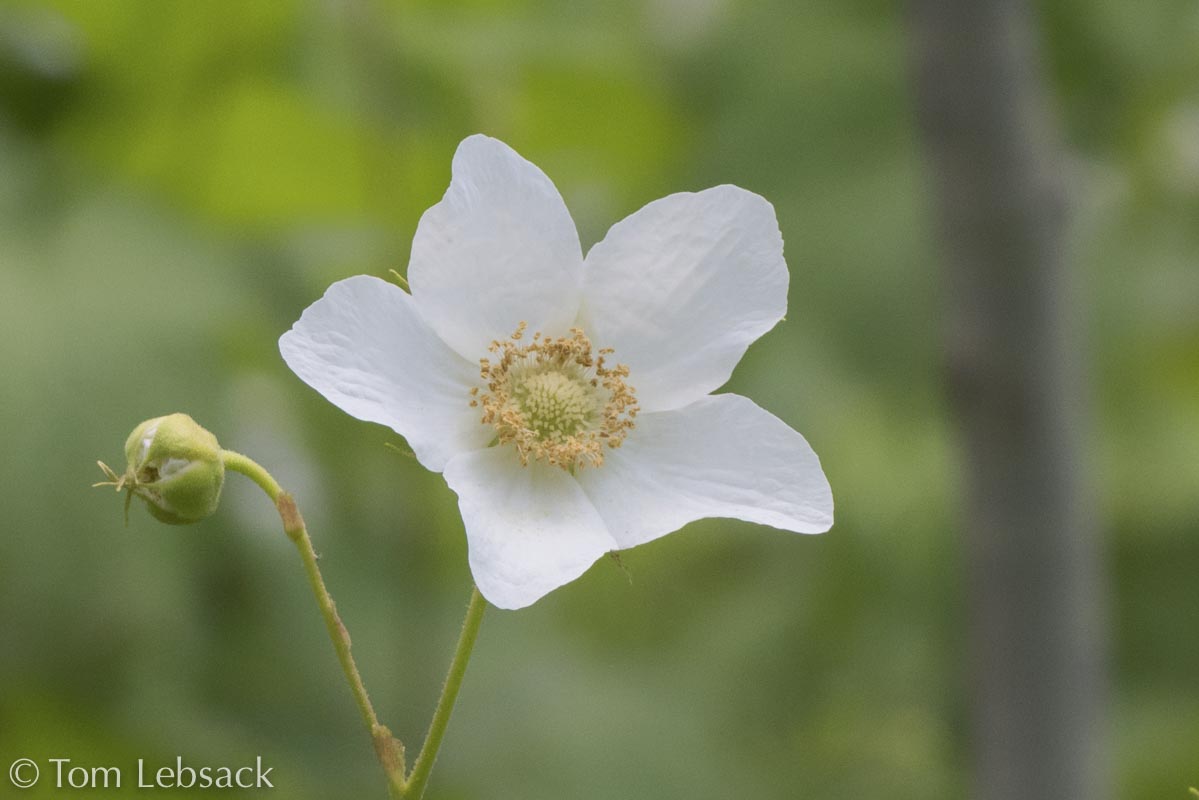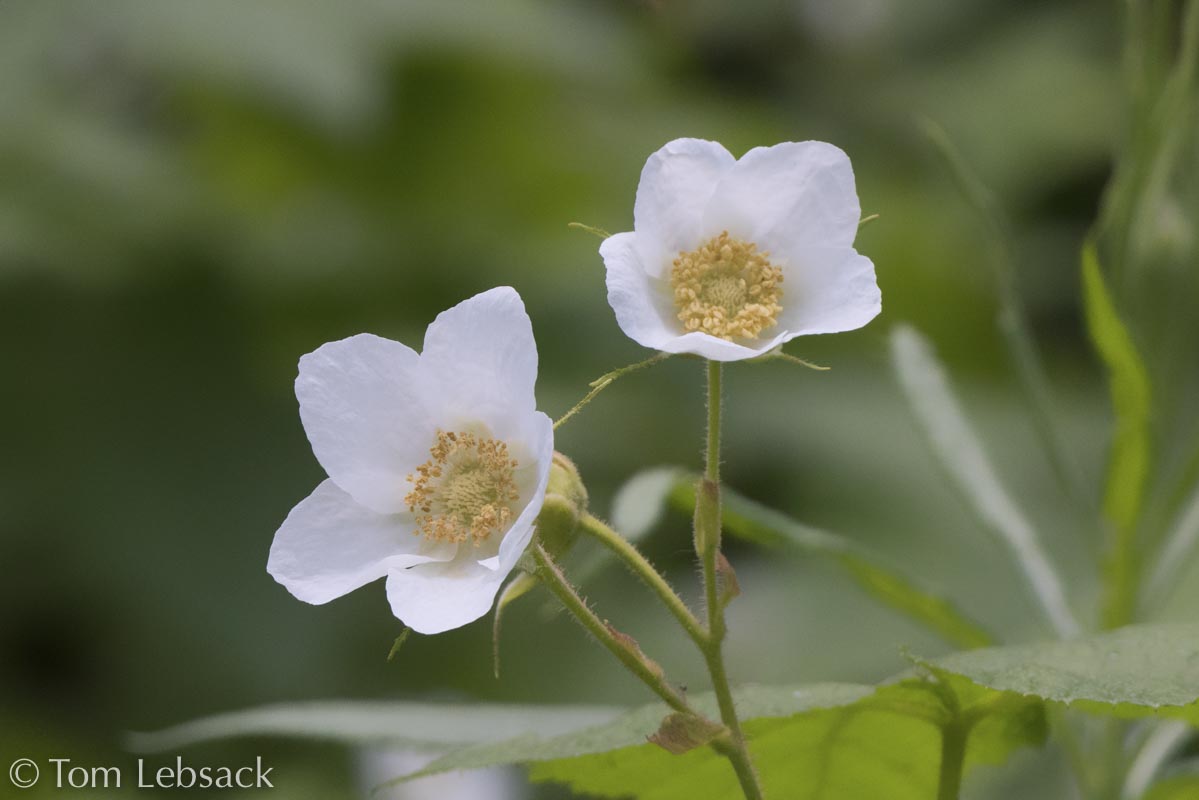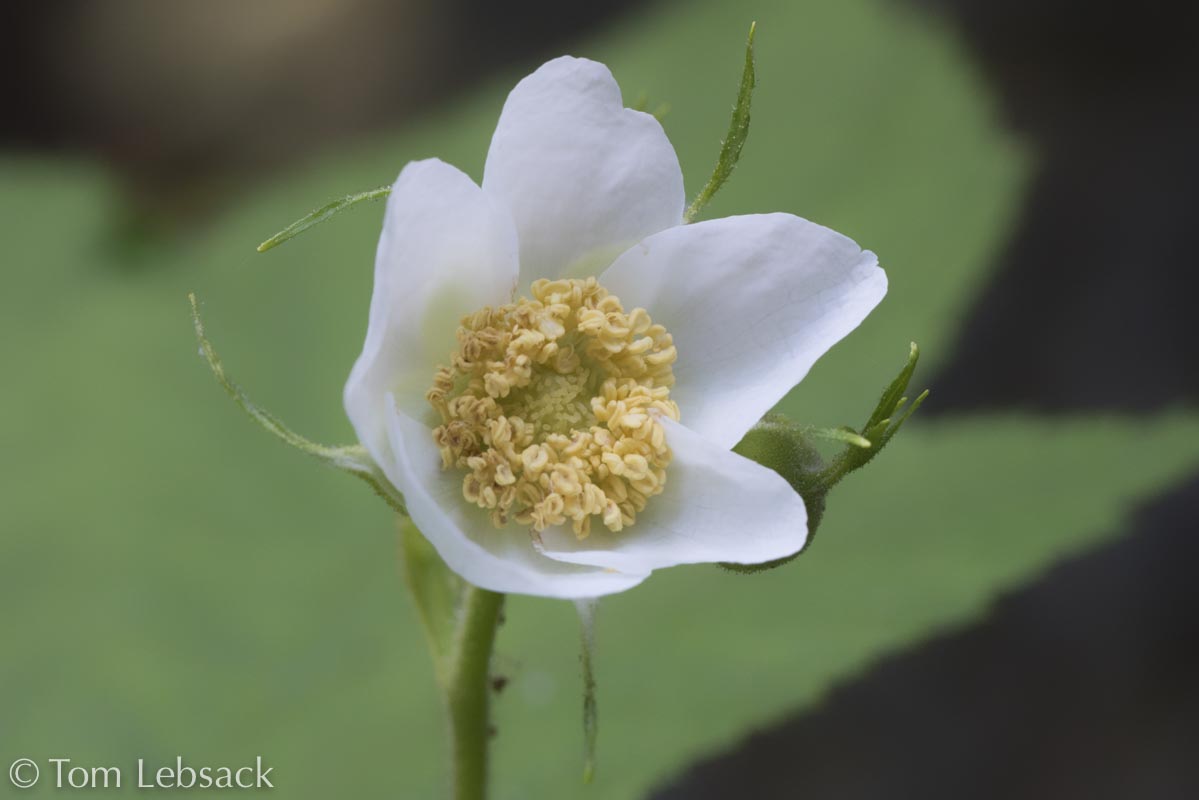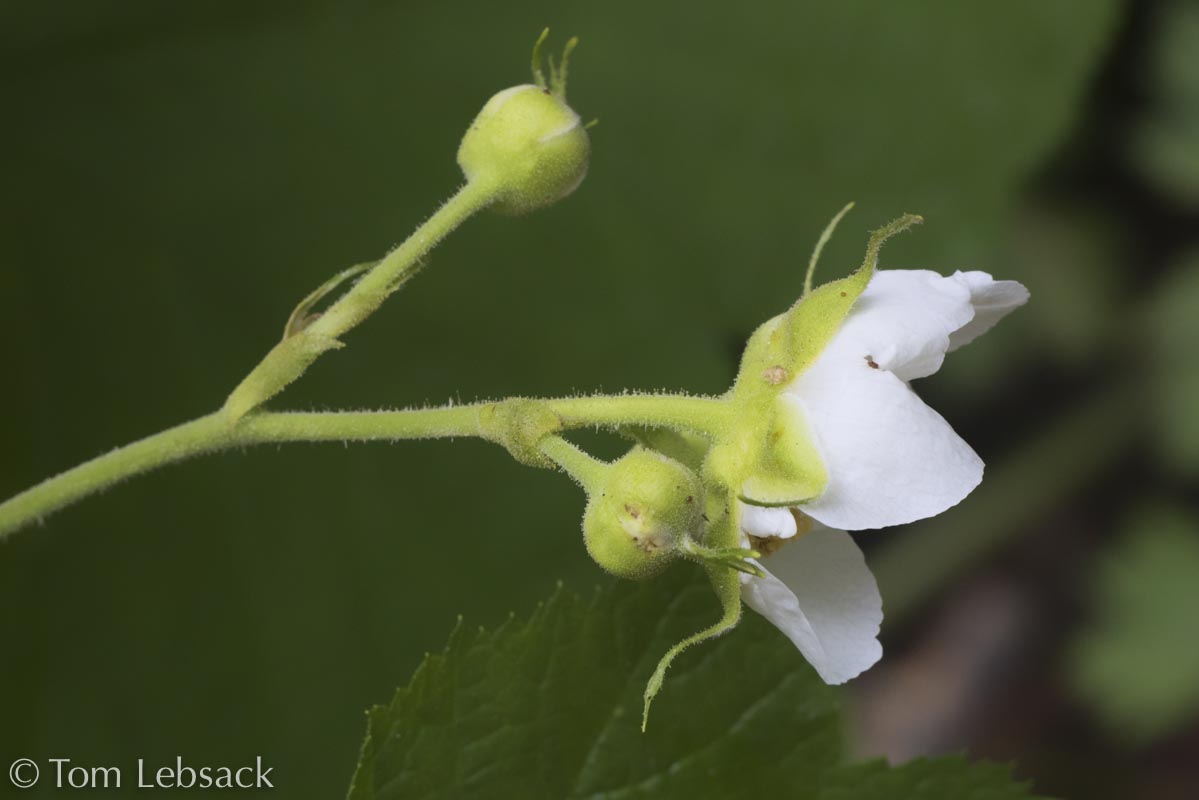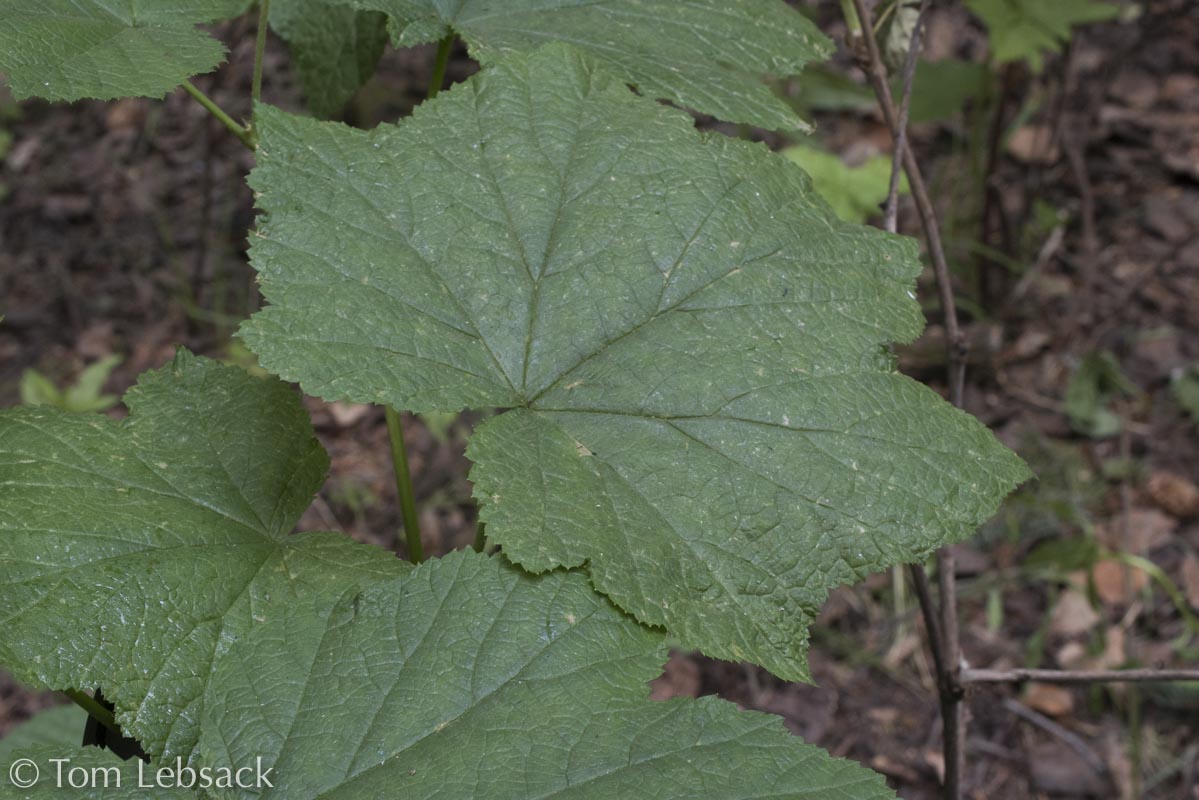(Thimbleberry)
| Scientific Name | Rubus parviflorus | USDA PLANTS Symbol | RUPA |
| Common Name | Thimbleberry | ITIS Taxonomic Serial No. | 25007 |
| Family | Rosaceae (Rose) | SEINet Reference |
Click Here |
| Description |
Life zones and habitat: Montane and subalpine, in Colorado (6500 to 10500 ft.); lower elevations in other western states. Open woods, meadows, streambanks, meadows, moist hillsides, roadsides, sandy areas. Plant: Perennial shrub, 3 to 6 feet tall often in dense clumps; stems (canes) with soft, glandular hairs, no prickles. Leaves: Large deciduous, alternate leaves, up to 6 inches wide on long stalks; 3 to 7 (usually 5) pointed lobes with toothed edges. Inflorescence: One to several flowers in a loose, open cyme at the end of a cane or at leaf axils; white flowers 1 to 2 inches across with obovate-shaped petals; 5 green, sticky, spreading sepals tapering to a narrow tip; many styles surrounded by numerous yellowish stamens. Bloom Period: June to August. Fruit: Round cluster, less than 1/2 inch in diameter of fleshy druplets, turning bright red. References: "Flora of Colorado" by Jennifer Ackerfield, SEINet, and American Southwest. |
BONAP Distribution Map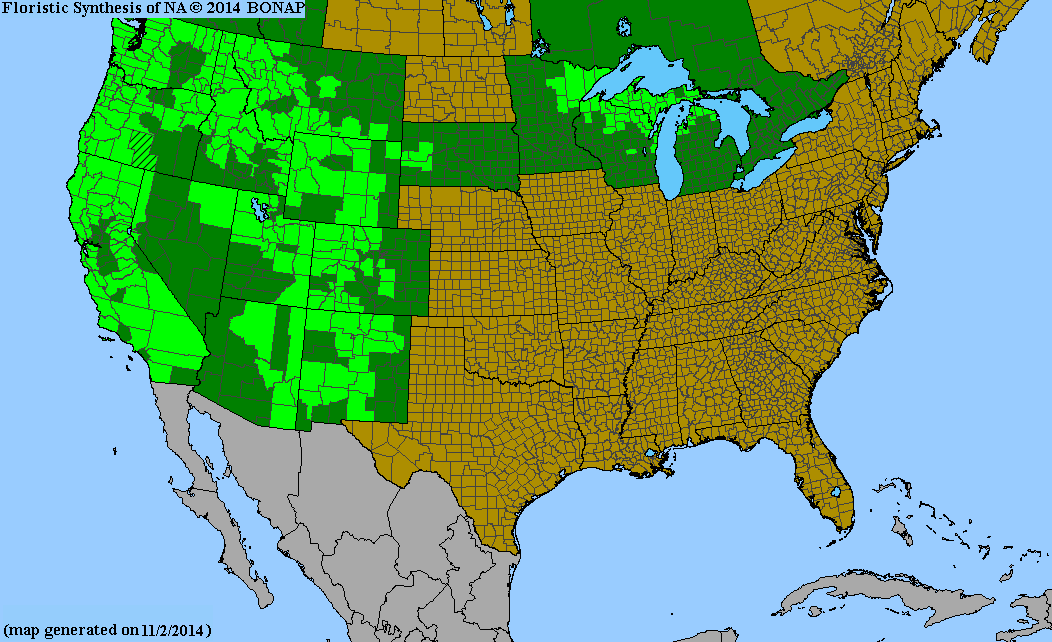 Map Color Key | Colorado Status: Native |
© Tom Lebsack 2025
Banner photo: Castilleja rhexifolia and a brewing storm over the San Juan Mountains
I try to provide accurate, up-to-date, and relevant information, but cannot guarantee the completeness or accuracy of any information presented on this website. I use authoritative references to insure high standards of accuracy and review and update the information frequently.
